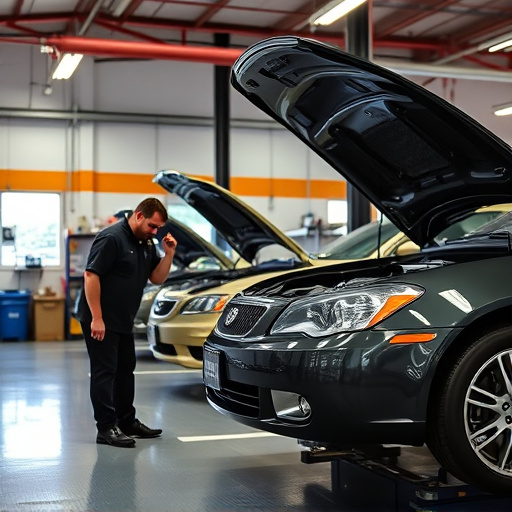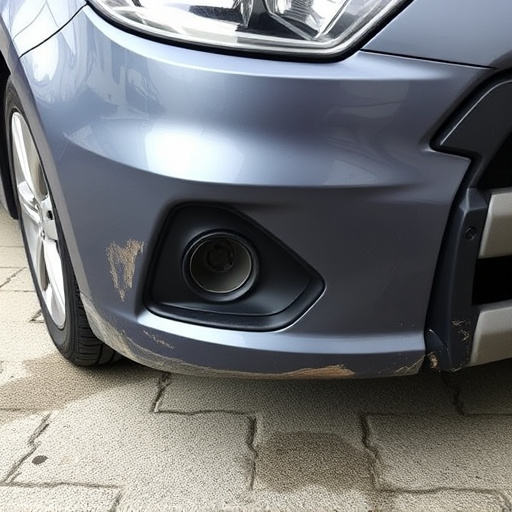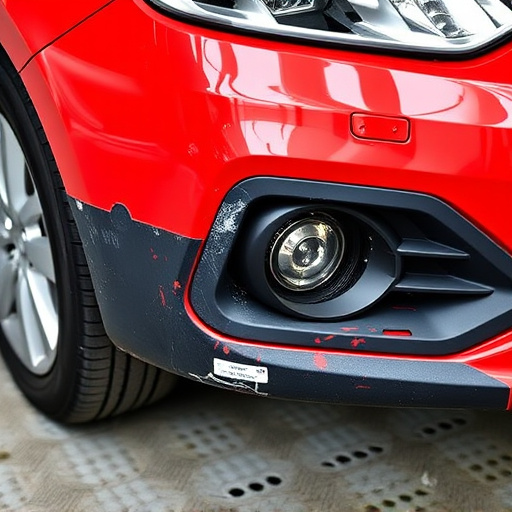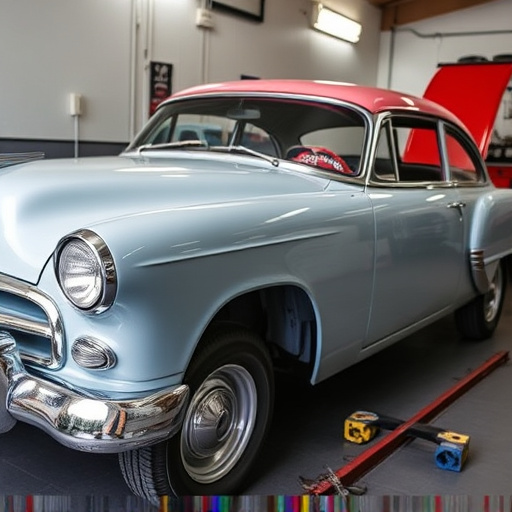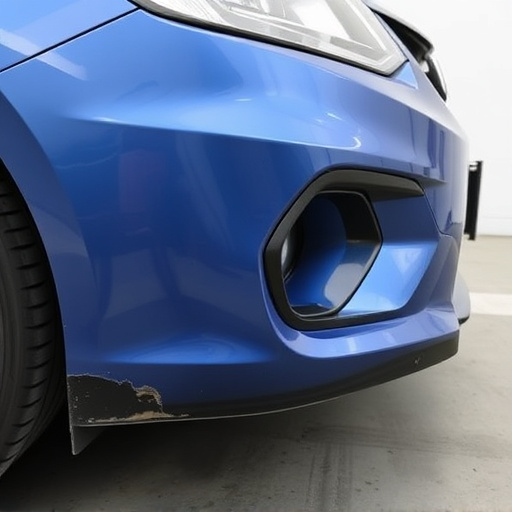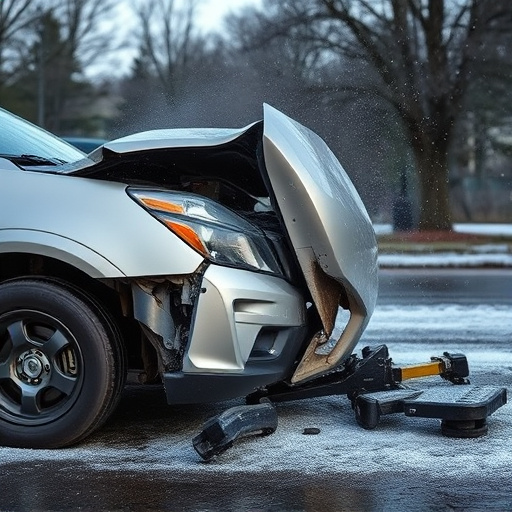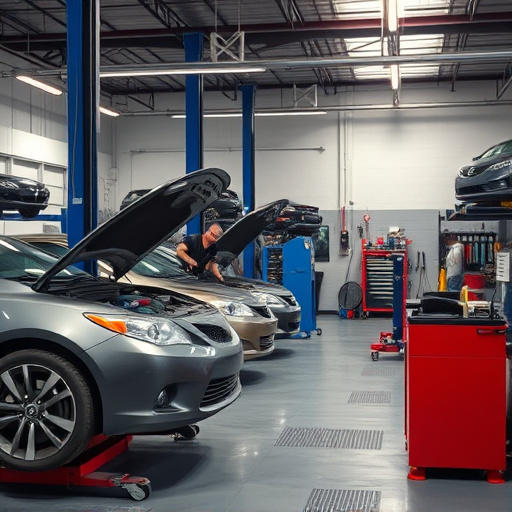Waterborne paint technology is a game-changer in auto repair, offering eco-friendly, efficient solutions with reduced emissions, faster drying times, superior finish quality, and enhanced durability. Its advantages over solvent-based paints make it a sustainable choice, appealing to environmentally conscious consumers and boosting workshop efficiency through quicker turnaround times and improved accuracy.
Waterborne paint technology is transforming the automotive industry, offering auto technicians a superior alternative to traditional coatings. This innovative approach, involving paints mixed with water instead of volatile solvents, brings numerous advantages. From improved worker safety and reduced environmental impact to enhanced durability and faster drying times, understanding waterborne paint composition and its benefits is crucial for modern auto repair and refinishing processes. This article explores these aspects and looks ahead to the technology’s sustainable future.
- Understanding Waterborne Paint Composition and Benefits
- Advantages for Auto Repair and Refinishing Processes
- Environmental Impact and Future of Sustainable Automotive Painting
Understanding Waterborne Paint Composition and Benefits
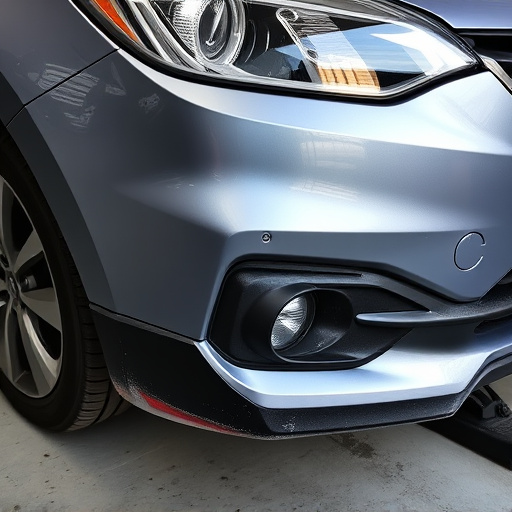
Waterborne paint technology has emerged as a significant advancement in the automotive industry, offering auto technicians a superior alternative to traditional solvent-based paints. This innovative composition is formulated using water as a carrier instead of volatile organic compounds (VOCs). The benefits are numerous; it’s not only environmentally friendly, reducing harmful emissions and volatile fumes during application, but also provides an excellent finish with minimal visible defects.
By adopting waterborne paint technology, auto technicians can enhance the quality of car paint services and bodywork repairs. These paints offer improved adhesion to various surfaces, ensuring long-lasting durability even in challenging weather conditions. The low VOC content makes it safer for both technicians and clients, reducing health risks associated with traditional painting methods. This technology also facilitates faster drying times, allowing for quicker turnaround in autobody repairs, which is a significant advantage for busy workshops.
Advantages for Auto Repair and Refinishing Processes
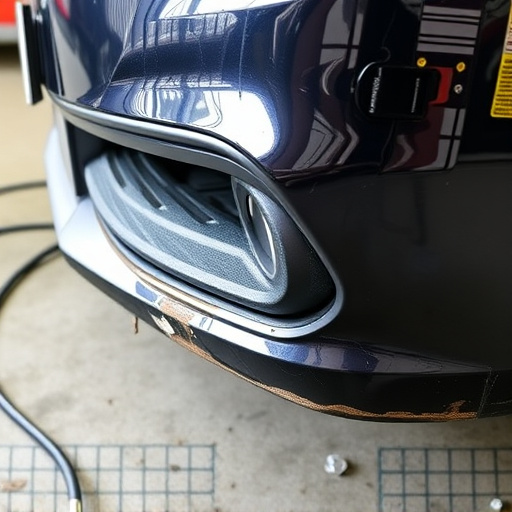
Waterborne paint technology offers numerous advantages for auto repair and refinishing processes, transforming traditional automotive body work methods. Unlike solvent-based paints, waterborne options dry faster, reducing the time required for multiple coats, which is a significant benefit in busy car body shops. This efficiency not only expedites repairs but also minimizes the risk of errors caused by haste, ensuring higher quality finishes.
Moreover, waterborne paint technology contributes to a safer working environment. With lower volatile organic compound (VOC) emissions, these paints offer better air quality for auto technicians, reducing potential health issues associated with solvents. This eco-friendly approach aligns with modern sustainability goals and appeals to environmentally conscious consumers who increasingly seek green automotive body repair solutions.
Environmental Impact and Future of Sustainable Automotive Painting
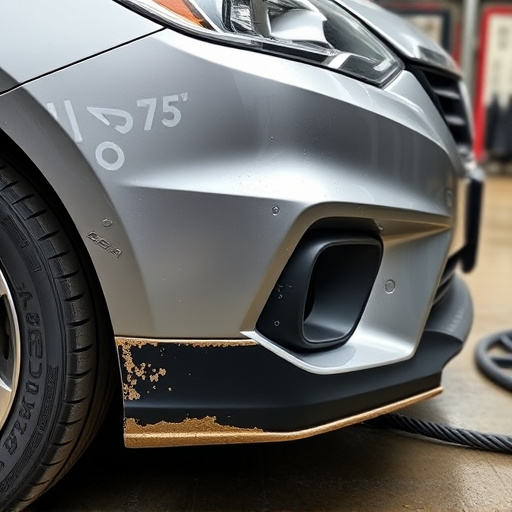
Waterborne paint technology is not just a trend but an essential shift towards sustainability in the automotive industry. Traditional solvent-based paints have long been associated with environmental concerns, emitting volatile organic compounds (VOCs) that contribute to air pollution and greenhouse gas emissions. In contrast, waterborne paints offer a greener alternative by using water as the primary carrier instead of harmful solvents. This technology significantly reduces VOC emissions, minimizing the ecological footprint during car body repair or dent repair processes, even after a fender bender.
Looking ahead, the future of automotive painting leans heavily on sustainable practices, with waterborne paint technology at its forefront. As regulations tighten and environmental consciousness grows, manufacturers and technicians must embrace these innovations. The benefits extend beyond ecological preservation; waterborne paints often provide improved durability, faster drying times, and better coverage, making them a practical choice for efficient car body repair processes. This shift promises not only to benefit the environment but also to enhance the overall efficiency and quality of automotive painting services.
Waterborne paint technology is a game-changer in the automotive industry, offering both efficient processes and sustainable solutions. By understanding its composition and benefits, auto technicians can leverage this technology’s advantages for improved repair and refinishing outcomes. Furthermore, the environmental impact of waterborne paints highlights their role in driving the industry towards a greener future, ensuring a lasting legacy for both vehicles and our planet.

